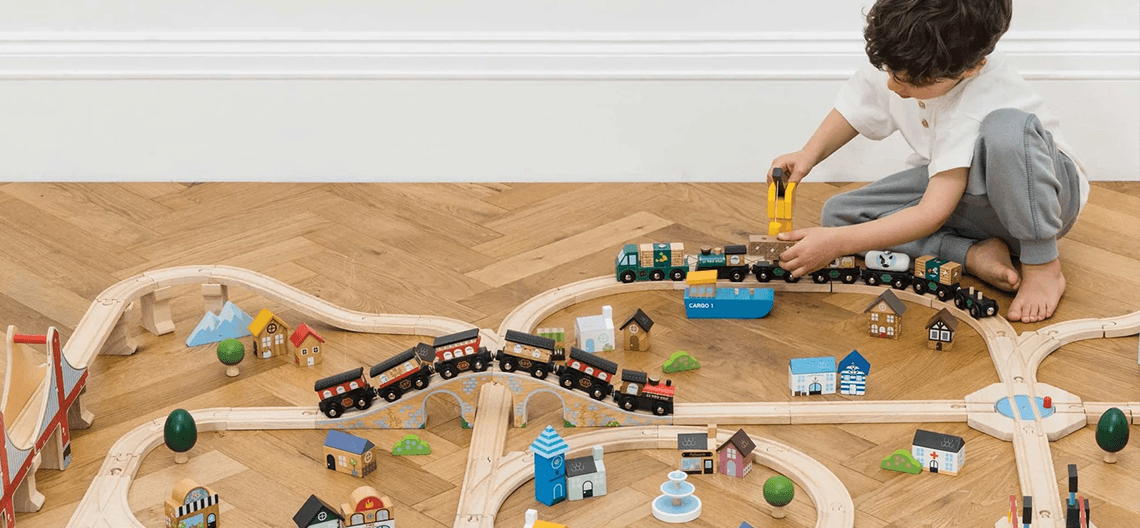
Play Time
How To Get Your Kids To Play Independently (So You Can Chill!)
When you become a parent, you’ll do anything for a few minutes of alone time, even if it’s just to go to the bathroom in peace (please!). Unfortunately, getting your kids to play without you, for more than two seconds, is sometimes easier said than done. Good news: they can learn!
- Photography
- Hero of Le Toy Van Royal Express
- Written By
- Elizabeth Kedar
From birth to big kids, we asked parenting pros to share their top tips for teaching kids to play dinosaurs or chef all by themselves—AKA, the dream. Whether you’ve got a threenager who refuses to play alone or a brand new baby at home, it’s never too late (or early) to encourage kids to play independently. And bonus: it’s great for their development.
What is independent play?
Essentially, independent play is just what it sounds like: a child playing alone, with siblings or friends (in a safe, child-proofed area) while parents watch or complete a task nearby. “I think when parents hear the term ‘independent play’ they have this vision of children playing by themselves for hours, whereas independent play is more of a skillset that we can help our children practice to eventually learn to be confident, self-directed learners,” notes Toy Designer and Founder of Follies, Chloe Varelidi. “And believe it or not, this is a skillset children can start developing from birth.”
Independent play for toddlers can be loud, as kids bring vehicles like fire trucks, trains, and other toys, or quiet—think things like playing with puzzles, painting, building a Magna-Tile castle or pretending to read books.
Why is independent play important?
Because parents need a break too! All jokes aside, independent play helps kids develop essential life skills. “They’re using their own minds to interact with the world and people around them, and it’s those interactions—however random or spontaneous—that can lead to cause and effect experiences,” explains pediatric occupational therapist, author and toy expert Keri Wilmot.
For example, “if a baby randomly hits a toy dangling above them, they might find some enjoyment in seeing the motion of the toy, and over time they will learn to do this over and over again, spending more time and attention to play and engage with this experience on their own.” They’re learning how to learn and focus. They’re also figuring out how to problem solve, make decisions and self-soothe in the process, which are all critical skills needed to be a healthy adult, adds Michelle Mintz, M.S., CCC-SLP, The Early Development Expert and creator of Baby Blooming Moments™.
What are the benefits of independent play?
From increasing concentration and encouraging creativity to developing self-regulation skills, there are so many benefits of independent play for babies and toddlers—who, if you haven’t noticed, love to do things all by themselves. “Independent play is a natural extension of what our children are capable of doing at this age,” says Varelidi. “It helps with all sorts of skills, such as building confidence, practicing the ability to focus on tasks to complete them, developing patience to problem solve and learning how to tinker with objects and materials.”
When toddlers play independently next to each other, also known as parallel play, there are many social benefits too, as they learn to communicate and share. Plus, busy parents benefit greatly when their kids are immersed in independent play, whether it’s the chance to finally enjoy a cup of (hot!) coffee on the couch or send off that work email they’ve been meaning to get out.



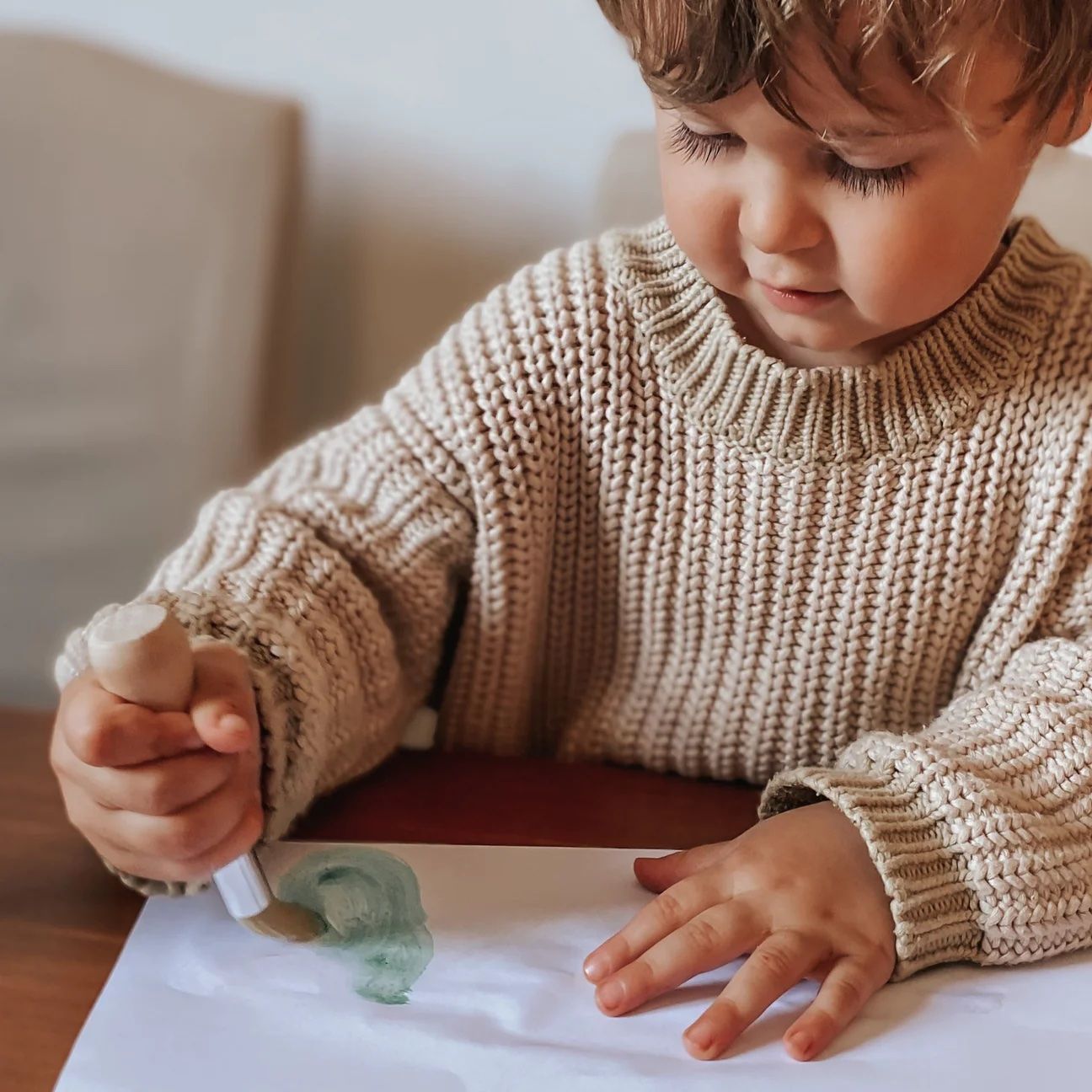
Left Image: Wee Gallery Woodland Taggy Ball
Right Image: Honeysticks My First Paint Brush Set
Your guide to independent play time by age:
While every child is different, it’s important to remember that we can’t expect our toddlers to play independently for huge chunks of time. Instead, Varelidi says you can expect a one-year-old to be able to focus gradually for up to five minutes on a task and a two-year-old for up to 10 minutes over time. As for the toys and activities themselves, here are just a few ideas:
- • Infants: “Think simple activities like laying your infant under an activity arch to look at the toys dangling above them,” advises Wilmot.
- • Babies: Set them up in a safe area with infant development toys like activity cubes, balls and sensory stuffies to explore while you make a quick snack or get older kids dressed. Bouncers with built-in toys are a great option for a few minutes of independent play for babies too.
- • Young Toddlers: “Younger toddlers will play independently best with structured activities like foam board puzzles, shape sorters and peg boards—something with a clearly-defined beginning, middle and end,” tells Wilmot.
- • Older Toddlers: As kids get older, open-ended toys—like blocks, Magna-Tiles, play kitchens, and arts and crafts—become more appealing.
How to encourage independent play
As much as we love our kids, the reality is, we can’t play with them every second of the day. There are chores to be done and meals to be made. Also, it’s good for kids to get bored, as it fosters creativity and boosts imagination—hello, imaginary friends, anyone? If you want more alone time for you and your children, here are some expert-approved tips to encourage independent play for toddlers:
• Show them how to play solo: The best way for kids to learn how to play independently is by modeling the behavior for them. This often means getting down on the floor and playing next to them in parallel, or starting an activity (together) you know they enjoy. “Next, we can ask kids to play by themselves for a reasonable time, like two minutes, while we sit next to them and do something else, such as cooking or taking a phone call,” says Varelidi. “Celebrating these little milestones with our child is important too, as we build their skillset little by little.”
• Get the wiggles out: A trick Wilmot often uses as an occupational therapist to help kids self-regulate and increase focus is to spend five or 10 minutes engaging the child in gross motor activities first. “Then, when they have had some time to get their energy out, encourage kids to play more independently on their own.”
• Choose developmentally-appropriate toys: The wrong toys can end independent play time quickly and lead to a lot of frustration for kids and their parents. “It's going to be difficult for a toddler to create an elaborate castle with blocks, so parents just need to manage their expectations and make sure they are meeting the child where they are at,” says Wilmot. “If the child is frustrated or not attending for a period of time, then find a toy that's simpler to play with and build up to more imaginative play later on.”
• Consider their particular interests: Whether it’s dolls or dinos, when toddlers and kids are engaged in their play and really interested in what they’re doing, then they will play more independently, points out founder of Smart Playrooms (and former preschool teacher) Karri Bowen-Poole. She suggests setting up specific areas to encourage independent play, such as:
◦ A building area with cars, trains, blocks, Magna-tiles, etc.
◦ A physical play area with things like a slide, climbing structure, mini trampoline or swing
◦ A music area with instruments
◦ A pretend play area with a small kitchen, pretend food and dress up clothes and accessories
◦ A reading nook with easily-accessible books on low shelves toddlers can reach
◦ An arts and crafts area with markers, paper, and loose, age-appropriate materials to get creative with
• Set up the playroom for success: “Toddlers love to play with what they can see and reach so having open shelving or storage cubes—with easy access to toys and materials—will help your toddler to stay and play independently, as they can find, touch and reach everything,” says Bowen-Poole.

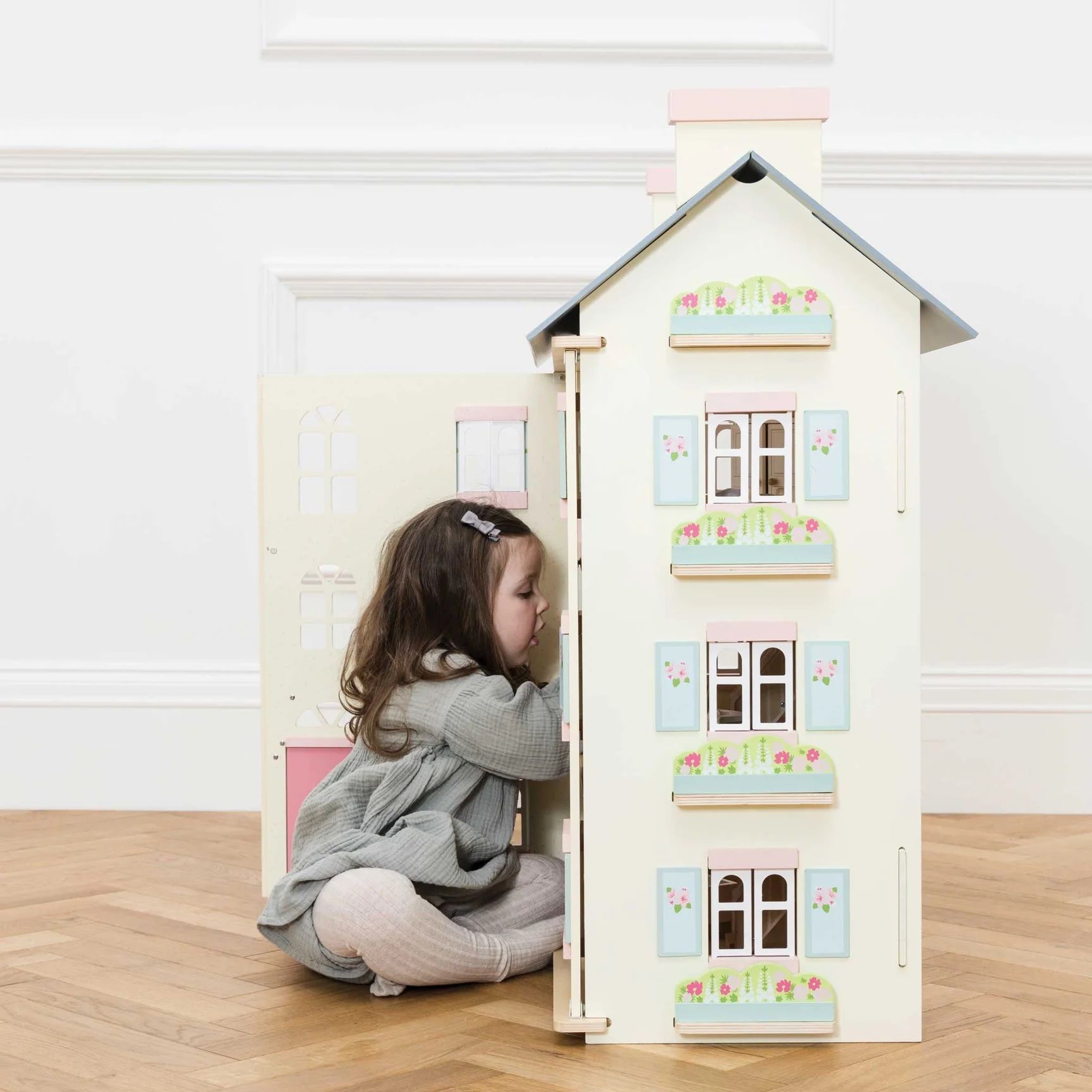
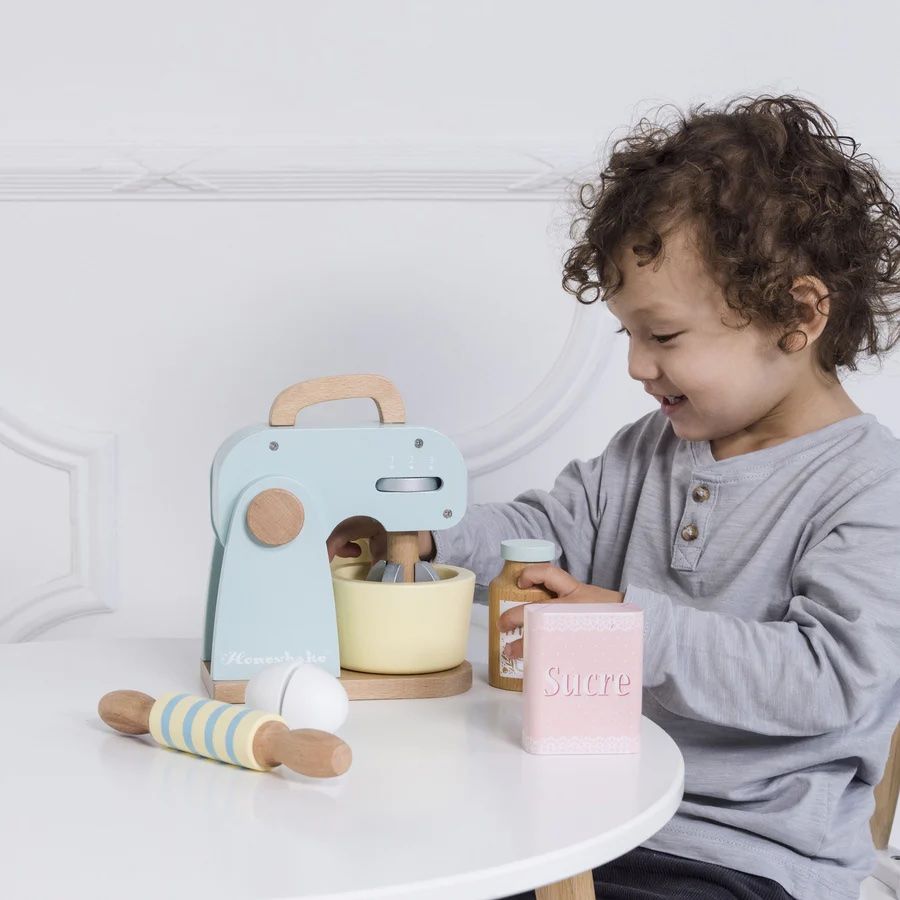
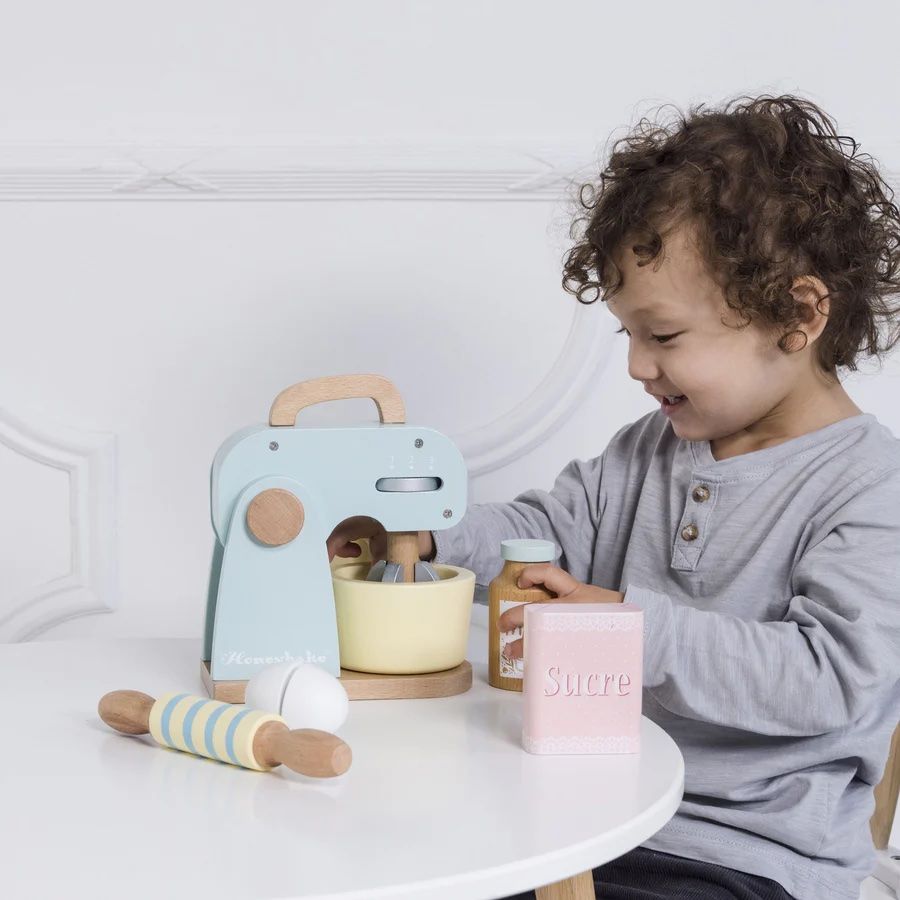
Left Image: Le Toy Van Cherry Tree Hall Dollhouse
Right Image: Le Toy Van Mixer Set
• Limit toy choices and rotate ‘em: “When only a few toys are available and toys are rotated each day or weekly, toddlers will generally remain more engaged and therefore play more independently,” notes Bowen-Poole. Too many toys can not only be overwhelming, but overstimulating for some kids —who may just choose to leave the room instead. Less really is more.
• Let them do their thing without interruption: We know, this one is hard. You want to praise your kids for building an epic fort or just butt in really quick to show them where that puzzle piece actually goes, but try to resist. “Just like grownups, it takes a while for a child’s brain to get into that happy state of flow where you’re enjoying a task you’re doing, and the feeling of being interupted can be discouraging for continuing that task,” explains Varelidi. Wilmot agrees, advising parents to give kids time to explore a toy on their own, even if that means making mistakes, before jumping in to fix it or make suggestions.
• Make sure they’re in the mood: You don’t want to mess with a tired, hangry toddler! “Expecting an independent play session after they’ve been awake for several hours and it's just before lunch or naptime probably isn't the best plan for success,” warns Wilmot. A happy, well-fed kid will most certainly play independently for longer.
• Allow for free play: Yes, you want them to learn their letters and numbers, but free play is so important for encouraging creativity and problem-solving skills in children. “There are always opportunities to promote education, but it's important to just let kids make their own safe play choices at times, so they can play in a way that is exciting for them, and experience their own joy in the process,” says Wilmot.